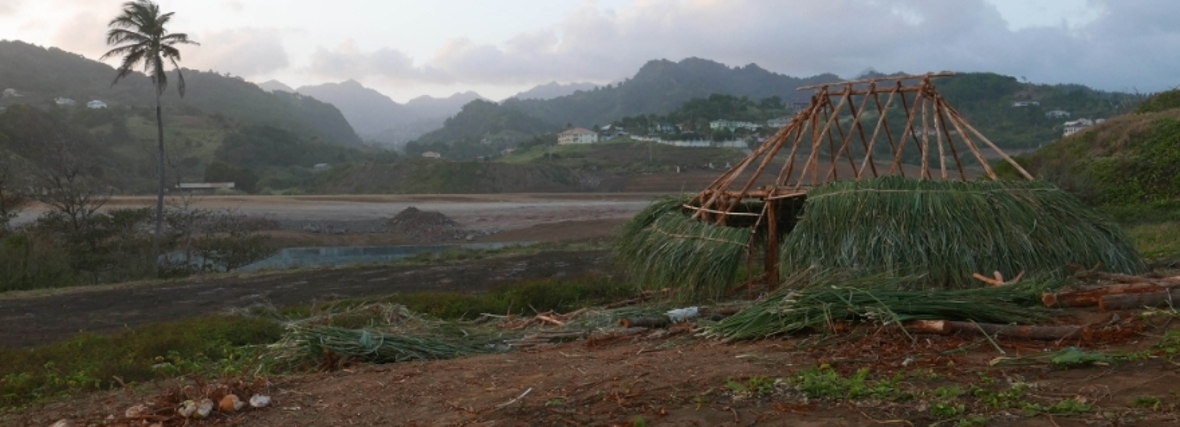
Start of reconstruction indigenous village in St. Vincent
In 2010, the remnants of a 16th century indigenous village were discovered in St. Vincent, on the construction terrain of the new International Argyle Airport.
The Amerindian village is now being reconstructed based on excavated floor plans and the detailed descriptions of 16th century travellers. The Cayo Village Reconstruction Project at Argyle is the first and only Kalinago-European site of encounter to be found and fully excavated.
The site was initially excavated by NEXUS 1492 archaeologists Dr. Corinne Hofman and Dr. Menno Hoogland and revealed floor plans of eleven Amerindian houses. Two of these dwellings were larger, elongated structures, which, using the dictionaries of Reverend Raymond Breton, were interpreted as men’s houses. Breton’s dictionaries include detailed descriptions of the houses and building materials.
The Cayo Village
During excavation, the archaeologists also found local and imported Amerindian pottery, beads, axe heads and other remnants of 16th century Kalinago habitation, as well as European wares. The Cayo style Amerindian pottery found shows affiliations with the coast of South-America and the Greater Antilles.
In the interest of preserving this important local heritage, the Cayo Village was declared a National Heritage Site. In the Island State of St. Vincent and the Grenadines there is a strong awareness of Amerindian ancestry among many people, including the Kalinago and Garifuna peoples. Representatives of both of these two peoples are involved in the building project.
Local materials and expertise
Last week, the archaeological team visited a local forest to obtain special building materials wood. The team will reconstruct the first Kalinago house in the manner in which it was originally built, using ancient technology. While their goal is to construct two huts while they are in St. Vincent, eventually, all original houses will be reconstructed, forming a full Kalinago Village.
Dr. Hofman and Dr. Hoogland are working with local St. Vincentians, as well as experienced builders of prehistoric houses. Choices made regarding type of wood, choice of binding material, material for roofing, and many more details are decided in discussions with the local experts and the Kalinago and Garifuna people.
Photos show the progress in reconstruction of the first house of the indigenous village.
An important part of island heritage
Last week, numerous stakeholders were present at the construction site, including the archaeological team and several local ministers: Hon. Cecil McKie, Ministry of Tourism, Sports and Culture; Hon. Frederick Stephenson, Ministry of National Mobilization, Social Development, etc., and Hon. Jimmy Prince, Minister of Education.
At this meeting, Minister McKie emphasized the importance of conservation: “Too often modern technology overlooks the building blocks of history, and the connecting links to our past are lost forever. Future generations would never forgive us if we did not take advantage of this rare opportunity, to preserve this corner of St. Vincent and the Grenadines’ history.”
The Cayo Village will be an outstanding contribution to the island’s heritage; documenting the history of St. Vincent and the Grenadines and its earliest inhabitants. It will also be a tourist attraction, and will offer for sale local arts, crafts, entertainment and indigenous foods. Meanwhile, the public is invited to view a large three-dimensional scale model of the early indigenous village that is now on permanent display at the National Public Library in Kingstown, St. Vincent.
The reconstruction project has been undertaken by the St. Vincentian Ministry of Tourism, Sports and Culture, in collaboration with the Faculty of Archaeology at Leiden University in the Netherlands. Also involved are the SVG Tourism Authority; the National Parks, Rivers and Beaches Authority; IADC; Alliance Francaise, and the Garifuna Heritage Foundation.
